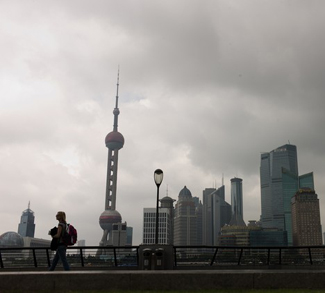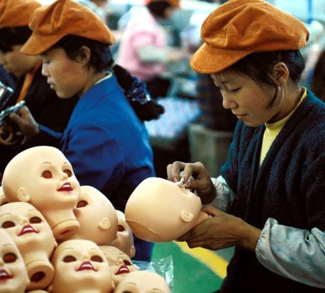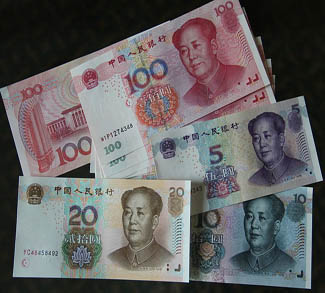As China’s economy matures, GDP growth is based more on domestic consumer demand and less on exports. This shift is increasingly reflected in China’s capital and financial account, which measures investment flows. China is now investing more abroad than foreign companies are investing in China, and the capital and financial account has gone from a $56.1 billion surplus in the first quarter of 2012 to a $71.4 billion deficit in the second quarter. When capital and financial accounts go negative, it means that there is less demand for local currency and that China is now selling more renminbi in order to invest abroad than foreigners are buying in order to invest in China. This capital exodus is funding Chinese overseas expansion, such as mining projects in Africa.
With this domestic capital flight, it is becoming very difficult for Chinese small and medium-sized enterprises (SME) to borrow from big banks. The cheapest funders are increasingly only lending to the largest and most secure borrowers because their profit margin is protected by the government and they lack incentive to make riskier loans. For example, in Canada, banks offer a 3.0% prime rate at 1.5% inflation, while the People’s Bank of China has set prime at 6.0% with inflation running at 2.2% per year.
Premier Wen Jiabao, whose term ends at year’s close, has decried this “monopoly” for costing the Chinese economy billions in suffocated revenue. China’s biggest publicly-traded brokerage, Citic Securities, has estimated that of China’s 42 million small and medium-sized businesses, only 3% are able to access bank funding. With their difficulties only increasing as the global economy continues to grow at a slow clip, the question needs to be asked: how do Chinese SMEs fund themselves now, and what does this mean for their foreign partners?
With bank funding hard to come by for SMEs, an increasing amount of funding for China’s expanding entrepreneurial spirit is being sourced as ‘alternative’ (non-loan) financing from non-traditional lenders. These funds are commonly attributed to the “shadow banking” sector. Although it is likely that the amount of credit extended by this sector is beginning to decline due to weakened loan demand, lower short-term interest rates, and increased government scrutiny, understanding this “shadow banking” sector is key to understanding the Chinese economy.
What Is It?
“Shadow banking” in the Chinese context loosely refers to non-loan financing. Since there is no commonly-accepted definition of the scope of this sector, getting a fix on its size is impossible. Last month, a report by Bank of America Merrill Lynch China strategist David Cui estimated the size of the shadow banking industry to be $2.2 trillion dollars. Cui’s estimate would be equivalent to 22% of the roughly $9.96 trillion in total loans issued by banks holding deposits with the People’s Bank of China. China UnionPay, the Chinese bank-owned electronic debit system (or the Chinese equivalent of Interac), has pegged the size of the industry even higher, at $2.8 trillion, or 38% of China’s 2011 GDP.
Who Does It?
“Shadow banking” does not have a standard definition, and regional differences are common. For example, in America the term refers to securitized loan products and their derivatives. Chinese banks have followed this trend, taking loans off their books by using trust companies as intermediaries to package and securitize loans for resale. In addition to packaging loans, trust companies also act as third-party wealth managers for institutional and private investors. These wealth-management products are being used to finance China’s property boom (some would say bubble), with the China Trustee Association self-reporting that 4.86% of the $870.42 billion in assets held with trusts were held in property development trusts.
Non-loan financing options are extremely varied in China. As with anywhere, loan sharks, private banks and pawnshops are available to borrowers who can’t access bank funding or loans from friends and family. In addition to these direct funding sources, peer-to-peer (p2p) private loans are also growing in popularity. These unsecured loans are increasingly originating over the internet (a North American analogue would be prosper.com) under a variety of underwriting standards ranging from self-reported credit ratings to none whatsoever. Since there is no national credit bureau, credit scoring and monitoring (let alone recourse for lenders) is virtually non-existent compared with similar North American online funding portals. China has over 2,000 p2p websites, although some figures indicate they are doing less than $2 billion in annual funding. An analogue to p2p funding is company-to-company funding, in which companies directly loan-out retained earnings to other companies through banks.
In addition to trust companies, leasing companies are also players in the “shadow banking” space. Similar to the practice of taking loans off the books by securitizing them with trusts, many state-owned banks operate leasing subsidiaries. This allows them to extend a broader selection of business funding options without over-hypothecating their collateral pool. Since equipment leasing comes with its own easy-to-repossess collateral (the equipment being financed), banks can extend equipment leases without materially affecting their loan-to-deposit ratios. The Chinese authorities are friendly towards this sort of non-loan lending because the collateral is so easy to repossess in case of default, and are actively working to encourage the industry. On August 3rd the state-run news agency Xinhua announced that the Ministry of Finance was initiating a pilot project in the northern port city of Tianjin to offer tax rebates on the foreign profits of Chinese leasing companies. Financial leasing companies in the Dongjiang Free Trade Port Zone will now receive a rebate on value-added tax and consumption tax on leases to foreign customers of five years or longer. Equipment leasing is becoming an increasingly popular financing option, with volume growing from $61.16 billion in September 2011 to $84.48 billion in June 2012.
One aspect of shadow banking that has recently captured the attention of the Chinese people is the growing use of micro-finance lenders. The sector is growing at quite a clip, with $15.36 billion in new loans offered in the first half of this year by 5,267 micro-credit firms for a total of $76.93 billion outstanding. Legitimizing and regulating this sector has been a major concern for officials, and two pilot projects to formalize the sector have been announced in Wenzhou and Guangdong. Informal moneylenders are being encouraged to register as private lending institutions. At the National People’s Congress in March Premier Jiabao commented “Chinese companies, especially small ones, need access to funds… Banks have yet to be able to meet those companies’ needs, and there is a massive amount of idle private capital. We need to bring private finance out into the open.”
The premier’s stance comes after widespread outrage over a high-profile micro-financing scandal. The sentencing of Yu Wing, a 31-year old businesswoman, has become a lightning rod of criticism. Wing borrowed $122 million from investors (at rates as high as 0.5% per day) on the shadow market to fund her companies, after finding herself unable to secure any bank funding. She employed the loans exactly as promised, but lost half of the investor proceeds to a business downturn. She was then arrested and sentenced to death. After mass protests (there are suggestions that she might have been connected to high-ranking officials who wanted her dead in order to cover their tracks), her sentence was commuted for two years and it is expected to be replaced with life imprisonment.
The Wenzhou experiment is off to a mixed start so far. The city’s non-performing (i.e. interest payments past due) loans ratio increased to 2.69% in June from 0.37% last June, representing roughly $2.83 billion of a $110.06 billion portfolio. Of these NPLs, the city’s banking regulator has estimated that only about $550 million, or 0.5% of the total, are likely to go into default. However, statistics are backward-looking and cannot deal with future unknowns. If China’s GDP growth continues to slow, there is no accurate precedent for determining what percentage of NPL’s will actually default.
Peering Into the Future
China is clearly taking steps towards reforming its financial services industries. The ultimate question is going to be whether or not the pace and scope of these changes is sufficient to counteract the growing finance gap between SMEs and large firms. On June 8th the PBOC granted banks the ability to offer depositors premiums of up to 10% on the benchmark deposit rate (currently set at 0.35%). As well, banks can now offer up to a 30% discretionary discount to their customers on borrowing costs, up from 10%. To what degree this will spur SME lending remains to be seen. Despite government efforts, the risk-reward profile for SMEs remains an obstacle for banks, with one loan officer commenting “The income is the same whether a bank gets 10, 1 million yuan ($159,236) loans or one 10 million yuan loan, but costs for the former option are much higher.”
Loan and growth problems aside, Chinese companies are also having a tougher time funding day-to-day operations as cash flow begins to dry-up due to slowing customer accounts receivable payment cycles. A recent business survey by Peking University and the internet export portal Alibaba showed 30% of businesses being affected by late customer payments in 2011, compared with only 6% of respondents in 2010. Since China has no central credit history tracking mechanism, commercial debtors find it very easy to pay on their own terms, or not at all. Bill discounting, referred to as “factoring” or “invoice discounting” in North America, is a rapidly-growing form of finance in China for this very reason. Since the purchaser of the accounts receivable is responsible for collections, the original vendor doesn’t need to be as worried about slow-paying customers. Factoring in China has grown from $235.72 billion in September 2011 to $358.31 billion in June 2012.
Slow accounts receivable payment was the number three concern for businesses surveyed, behind rising labor costs and falling orders. The latter is symptomatic of a cooling global economy, while the former can be linked to central bank intervention. Since 2008, China has provided nearly $650 billion of liquidity to stimulate the domestic economy. This has had the effect of driving-up wage demands by workers due to rising food prices. Chinese inflation is running at a 1.8% annual clip, but food inflation is 33% higher at 2.4%. Since food is the major expenditure for Chinese households, the plight of 32-year-old Fang Houliang is a common one in China: “I’m still looking for a job, not because there are no opportunities. Salary is the problem… Of the 2,000 yuan (Fang’s monthly salary), 300 goes to rent and electricity fees, 1,200 for feeding a family of three, and then there’s the cost of cigarettes and phone calls. Little is left to save. The pay should be at least 3,000 a month, considering the price hikes of daily necessities”. Considering the difficulty Chinese authorities have had controlling consumer inflation resulting from the 2008 stimulus, it is unlikely that they will be quick to offer more fiscal stimulus in the near-term. This does not bode well for the already-difficult SME funding situation.




